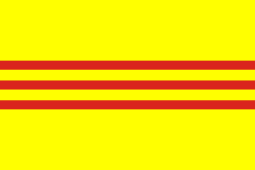Howitzer Motor Carriage M8
| 75 mm Howitzer Motor Carriage M8 | |
|---|---|
|
75 mm Howitzer Motor Carriage M8 on display at the Musée des Blindés. | |
| Type | Self-propelled artillery |
| Place of origin | United States |
| Production history | |
| Designer | U.S. Army Ordnance Department |
| Designed | 1942 |
| Manufacturer | Cadillac division of General Motors |
| Produced | September 1942–January 1944 |
| Number built | 1,778 |
| Specifications (75 mm Howitzer Motor Carriage M8[1]) | |
| Weight | 34,600 lb (15.69 metric tons) |
| Length | 16 ft 4 in (4.98 m) with sand shields |
| Width | 7 ft 7.5 in (2.32 m) with sand shields |
| Height | 8 ft 11 in (2.72 m) over antiaircraft machine gun |
| Crew | 4 (Commander/loader, gunner, driver, assistant driver) |
|
| |
| Armor | 0.375 to 1.75 in (9.5 to 44.5 mm) |
Main armament |
75 mm Howitzer M2/M3 in Mount M7 46 rounds |
Secondary armament |
.50 caliber (12.7 mm) Browning M2HB machine gun 400 rounds |
| Engine | Twin Cadillac Series 42; 220 hp (164 kW) at 3,400 rpm |
| Power/weight | 14.02 hp/metric ton |
| Transmission |
Hydramatic 4 speeds forward, 1 reverse |
| Suspension | Vertical volute spring suspension (VVSS) |
| Fuel capacity | 89 US gallons (340 liters) |
Operational range | 100 mi (160 km) |
| Speed | 36 mph (58 kph) on road |
The 75 mm Howitzer Motor Carriage M8 was a self-propelled howitzer vehicle of the United States developed during World War II.[2]
Development and production
The first design for a close support howitzer on an M5 tank chassis was the T41, which had the howitzer in the hull front. This did not progress past the mock-up stage as the crew would not have been sufficiently protected and design work started on the T47.[3] It was developed on the chassis of the then-new Light Tank M5 (Stuart VI). The prototype was designated the 75 mm Howitzer Motor Carriage T17E1[4] It had the standard M5 turret removed and replaced with a larger open-topped turret; as a result, the drivers' hatches had to be moved from the hull roof to the glacis plate. After a mock-up had been produced, it was ordered into production as the 75 mm Howitzer Motor Carriage M8. In November 1944, the Ordnance Department gave it the name General Scott, after American general Winfield Scott. Production ran from September 1942 to January 1944. A total of 1,778 vehicles were produced by the Cadillac division of General Motors.
Armament
The armament consisted of a new open-topped turret armed with a 75 mm M2 howitzer, later a 75 mm M3 howitzer. The M8 carried 46 rounds of 75 mm ammunition; 11 rounds at the right rear of the fighting compartment, 20 rounds at the left rear of the fighting compartment, 9 rounds in the left hull sponson, and 6 "ready" rounds stored between the driver and assistant driver's positions. The most common types of ammunition carried were the M89 white phosphorus shell and the M48 high explosive shell. Unlike the standard M5 light tank, the M8 featured no hull-mounted or coaxial Browning M1919A4 .30 caliber machine gun. A Browning M2HB .50 caliber machine gun with 400 rounds was mounted on the right rear corner of the turret for local defense and anti-aircraft purposes.
Combat service
The 75 mm Howitzer Motor Carriage M8 was assigned to the Assault Gun Troops of Cavalry Reconnaissance Squadrons in order to give them close support against enemy fortified positions. The high elevation (40 degrees) of the howitzer was useful for hitting enemies emplaced on the sides of hills. The M8 was used in the Italian Campaign, the Western Front, and in the Pacific Theater of Operations by the US Army and on the Western Front by the French Army. It was also used by the French Union and State of Vietnam during the First Indochina War. It stayed in French service until the 1960s and saw service in Algeria.
Variants
- 75 mm Gun Motor Carriage M8A1: A lightweight tank destroyer prototype that used an M5A1 light tank hull. The M8's turret was paired with a 75 mm gun M3 as used on the M4 Sherman tank. The project was later cancelled with the development of the M18 Hellcat.
Users
 United States - U.S. Army
United States - U.S. Army France - French Army
France - French Army South Vietnam - Army of the Republic of Vietnam (ARVN)
South Vietnam - Army of the Republic of Vietnam (ARVN) Cambodia - Khmer National Army (FANK)
Cambodia - Khmer National Army (FANK).svg.png) Kingdom of Laos - Royal Lao Army
Kingdom of Laos - Royal Lao Army Republic of China - Republic of China Army (ROCA)
Republic of China - Republic of China Army (ROCA) Tunisia - Tunisian Army
Tunisia - Tunisian Army
See also
- Landing Vehicle Tracked (Armored) 4) — an LVT(A)1 rearmed with the turret of the 75 mm Howitzer Motor Carriage M8
- G-numbers
References
- ↑ http://afvdb.50megs.com/usa/75mmhmcm8.html
- ↑ "M8 Scott (Howitzer Motor Carriage M8) 75mm Self-Propelled Howitzer (SPH) (1942)". MilitaryFactory. October 17, 2014. Retrieved February 5, 2015.
- ↑ Chamberlain and Ellis (1969) British and American Tanks of World War II p96
- ↑ http://www.wwiivehicles.com/united-states/vehicle/name-designation/t-number-vehicles.asp
